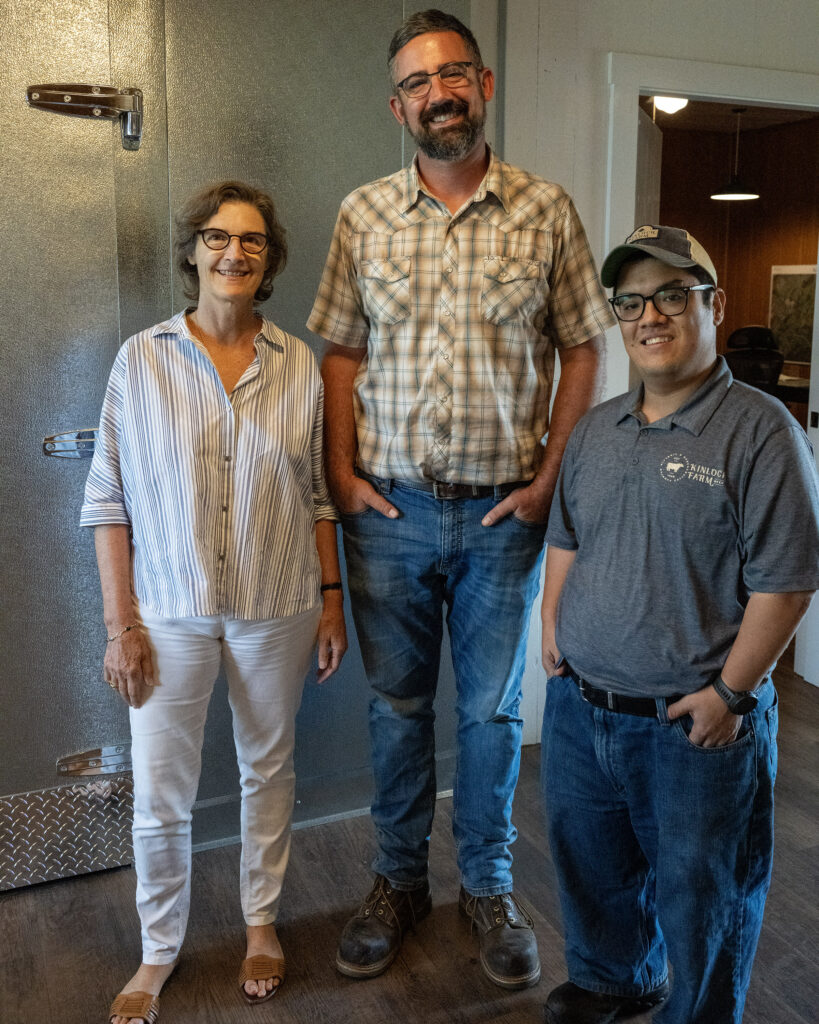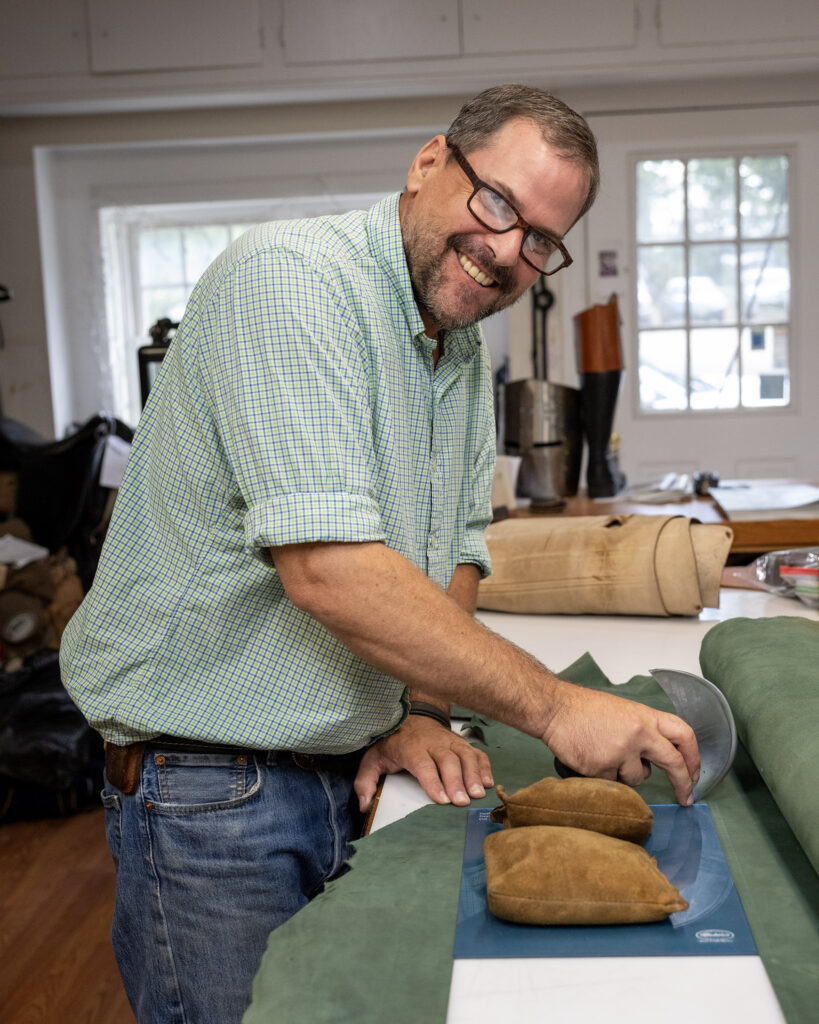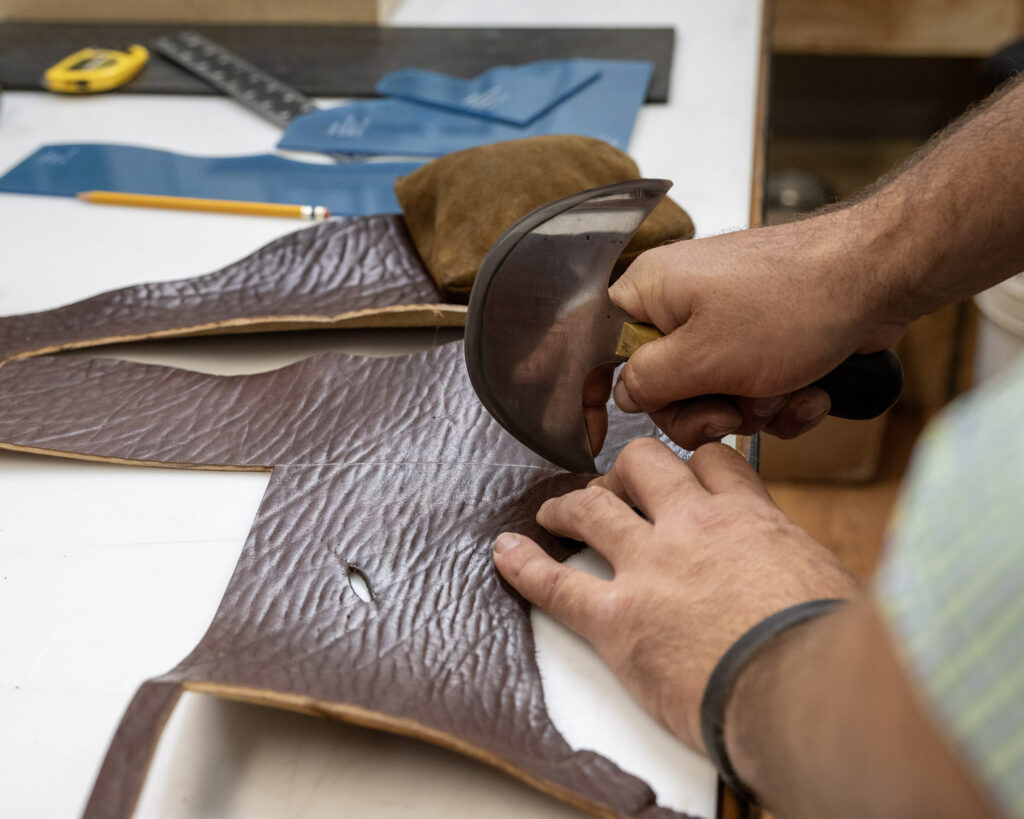Local Leather Collaboration is a Lesson in Sustainability

Written by Kaitlin Hill
A local collaboration between Kinloch Farm in The Plains and Larkins Leatherworks in Marshall is a lesson in sustainability with some seriously stylish results.
“Mike approached us because he knew we were local. When we said we were interested, he just wanted to know how we wanted the leather,” shares Maryalice Matheson-Thomas, owner, operator, and leatherworker at Larkins. In February, Mike Peterson, the farm and conservation director at Kinloch Farm, approached the Larkins team about using leather hides left over from Kinloch beef production to make bespoke handbags, coasters, bookmarks, and more.


“There is a whole lot of the animal that can still bring a lot of value, whether intrinsic or economic, that we were missing out on,” Peterson explains. He adds, “We were at the point with our local slaughterhouse where the rendering company wasn’t taking our hides. We were having to pay a hide disposal fee.”
For Peterson, the ability to use the whole animal or as close to it as possible was not only motivated by economic opportunity, but also community involvement. “How can we not just get more of an economic return, but involve more community partners and local businesses to highlight our farm, our animals, the way we do things and why we do it?” He continues, “We’re raising these animals in an ecologically conscious manner. Let’s extend that beyond our meat into leather production.”
The path from hide to handbag starts at the farm where the hides are cured and dried, which is about a two-week process. After the curing salt is removed, “we wait until we get a good-sized shipment to go up to a tannery in New York.”

Though the tannery isn’t local, it has a long legacy in the business and, perhaps more importantly, environmentally-friendly practices that match the Kinloch Farm standards. Peterson ships the hides to Pergamena, a tannery that dates back to 1550 where they first opened in Eisenberg, Germany, and are masters of veg-tanning. Peterson explains, “There are two different ways to tan an animal hide. One uses a chromium base which is a highly corrosive and toxic chemical. Pergamena doesn’t use that. They use a process called veg-tan or vegetable-tanning.” He continues, “They are using naturally derived ingredients to tan these hides. So we’re saving hundreds of hides, and supporting a tannery who has been in business for hundreds of years and doing it in an environmentally conscious way.”
The tanning process takes about six months and is part of Pergamena’s traceable leather tan and return program. “All the hides we get back are stamped with our farm name, so we are ensured that each hide we are sending to them, we are getting back.”
Once tanned, Larkins enters the process to transform the leather into custom creations. “Mike showed me some designs he had downloaded and I took those ideas, looked at the leather that we were given, and came up with something close to what he wanted,” shares Kai Holle, the saddler at Larkins.


“The leather really tells me what I can make,” Holle continues. Larger pieces are used for handbags, while pieces that might otherwise be considered scraps are masterfully crafted into smaller items like coasters, bookmarks, and wallets. “I just recently made two pocket knife sheaths,” Holle shares. “I am trying to use up all the leather and not have any scraps.” Peterson adds, “Each hide is very different; there are different cut marks, they are shaped in different ways. So, I am relying on them a whole heck of a lot to be able to get the best utilization from each hide.”
The combination of local products being used as wholly as possible is, as Matheson-Thomas puts it, “getting back to the way it’s supposed to be.” There is also the added bonus that “It’s having something that no one else has, because it is all one of a kind,” Holle notes.

The community seems to believe so too, as the response has been extremely positive. “We’ve been pleased with the comments from customers,” Matheson-Thomas says modestly. Peterson adds, “Everything has been selling at a pretty good clip. I’m encouraged by the response — not just the attention and conversations about it, but by what’s been selling. It has been rewarding to see this whole thing.”
When asked about scaling the project to meet demand, both parties agree that it will largely depend on the leather, and they are happy with the status of the operation and, most importantly, the partnership. “That relationship is very important and it has turned out to be an amazing partnership and connection,” Peterson says. Matheson-Thomas concludes, “We’re just trying to keep everything local. There is no reason not to.” ML
For those interested in owning a piece of this local project, the leather goods are sold at Kinloch’s Farm Store.
Published in the October 2023 issue of Middleburg Life.








